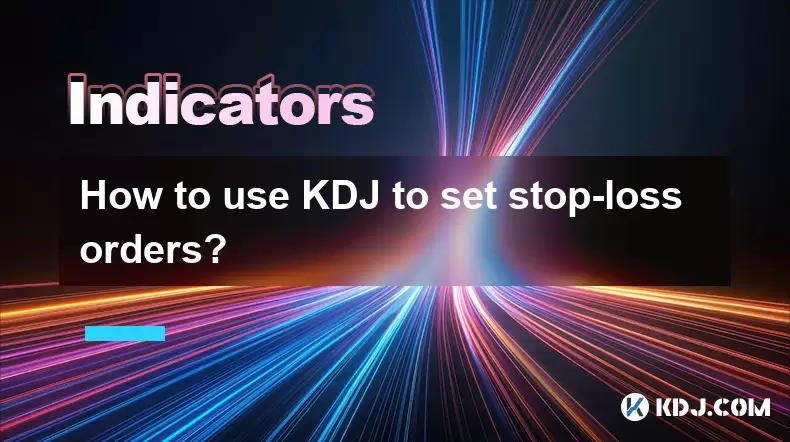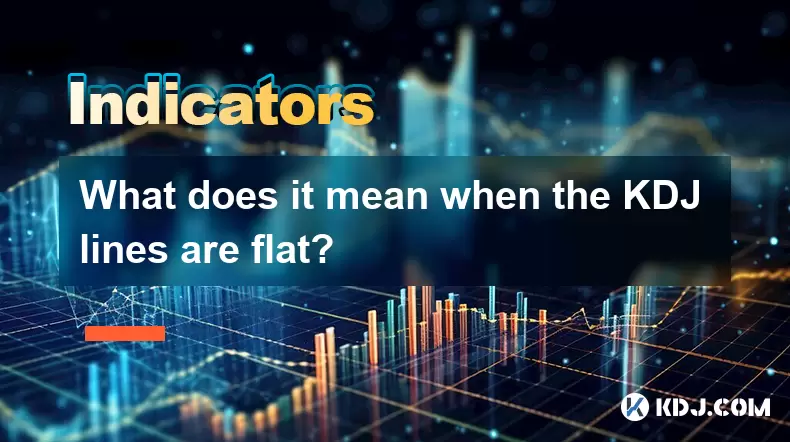-
 Bitcoin
Bitcoin $114700
-3.36% -
 Ethereum
Ethereum $3619
-6.51% -
 XRP
XRP $2.926
-7.66% -
 Tether USDt
Tether USDt $0.9998
-0.02% -
 BNB
BNB $768.6
-4.90% -
 Solana
Solana $168.2
-7.52% -
 USDC
USDC $0.9999
0.00% -
 Dogecoin
Dogecoin $0.2045
-9.02% -
 TRON
TRON $0.3243
-0.27% -
 Cardano
Cardano $0.7208
-8.45% -
 Hyperliquid
Hyperliquid $39.74
-9.17% -
 Stellar
Stellar $0.3882
-8.79% -
 Sui
Sui $3.481
-11.93% -
 Chainlink
Chainlink $16.52
-9.04% -
 Bitcoin Cash
Bitcoin Cash $556.7
-4.79% -
 Hedera
Hedera $0.2444
-11.40% -
 Avalanche
Avalanche $21.96
-8.51% -
 Ethena USDe
Ethena USDe $1.001
-0.02% -
 UNUS SED LEO
UNUS SED LEO $8.950
0.15% -
 Toncoin
Toncoin $3.425
-2.33% -
 Litecoin
Litecoin $104.4
-5.94% -
 Shiba Inu
Shiba Inu $0.00001212
-7.49% -
 Polkadot
Polkadot $3.630
-6.98% -
 Uniswap
Uniswap $9.165
-10.12% -
 Monero
Monero $306.8
-3.10% -
 Dai
Dai $0.9999
-0.01% -
 Bitget Token
Bitget Token $4.360
-3.43% -
 Pepe
Pepe $0.00001049
-9.59% -
 Cronos
Cronos $0.1352
-8.67% -
 Aave
Aave $256.5
-8.03%
Is the shrinking volume and stepping back after breaking through the platform a confirmation of support or a false breakthrough?
A breakout with shrinking volume and a pullback may signal a false move; watch for a retest with rising volume to confirm validity.
Jul 30, 2025 at 12:43 pm

Understanding Breakouts and Volume Dynamics in Cryptocurrency Trading
In cryptocurrency markets, a breakout occurs when the price of an asset moves beyond a defined support or resistance level with increased volume, often signaling the start of a new trend. Traders watch for these events closely, especially when they follow a period of consolidation, also known as a platform. However, not all breakouts lead to sustained price movements. A common scenario involves a price breaking above resistance, followed by a shrinking volume and a retreat back into the prior range. This raises a critical question: is this movement a true confirmation of support, or merely a false breakout?
When a breakout happens with strong volume, it typically reflects genuine market conviction. High volume indicates that a significant number of traders are participating in the move, which increases the likelihood of follow-through. However, when volume begins to shrink after the breakout, it suggests weakening interest. This lack of momentum can allow price to drift back into the previous consolidation zone. The key distinction lies in whether the price finds support at or near the breakout level after retreating.
What Does Shrinking Volume Indicate?
Volume is a critical indicator of market strength. In the context of a breakout, sustained high volume confirms that buyers (or sellers) are in control. Conversely, shrinking volume after a breakout implies that the initial surge lacked broad participation. This could mean that the breakout was driven by a limited number of large orders or speculative momentum rather than widespread market acceptance.
- Low follow-through volume suggests that new buyers are not entering the market at higher prices.
- If the price retests the breakout level and fails to hold it with renewed volume, the breakout is likely invalid.
- A return to the platform with minimal volume indicates indecision and a potential reversal.
For example, if Bitcoin breaks above $45,000 on high volume but then trades back down to $44,500 on declining volume, it may not signal failure immediately. However, if subsequent attempts to reclaim $45,000 occur on weak volume, the probability of a false breakout increases.
Retesting the Breakout Level: Support or Resistance Reversal?
After a breakout, it is common for price to retest the former resistance (now potential support). This retest is a crucial moment for confirmation. If the price bounces off this level with renewed volume, it strengthens the case for a valid breakout. However, if the price breaks back below and closes under the breakout level, especially on rising volume, it invalidates the breakout.
- A successful retest should show price holding above the breakout level.
- Bullish candlestick patterns (e.g., hammer, bullish engulfing) during the retest add credibility.
- Volume should increase during the bounce, indicating renewed buying interest.
For instance, if Ethereum breaks above a resistance at $2,000 and later pulls back to $1,980, holding above $1,975 with a strong green candle and rising volume, this supports the idea of a valid breakout. On the other hand, closing below $1,970 on increasing volume would suggest the breakout failed.
Differentiating Between False Breakouts and Healthy Pullbacks
Not every retreat after a breakout is a failure. Markets often experience pullbacks as traders take profits or consolidate gains. The difference between a healthy pullback and a false breakout lies in structure and volume.
- A healthy pullback occurs within a defined range, does not violate key levels, and resumes upward with strong volume.
- A false breakout involves a decisive move back into the prior range, often closing below the breakout level on the daily chart.
Traders can use tools like moving averages or trendlines to assess whether the pullback is part of a larger uptrend. For example, if the 20-day EMA remains sloping upward during the pullback and price holds above it, the trend may still be intact. Also, observing order book depth on exchanges can reveal whether large buy walls are present near the breakout level, indicating potential support.
Using Technical Indicators to Confirm Breakout Validity
Technical indicators can provide additional insight into whether a breakout is genuine. The Relative Strength Index (RSI), MACD, and volume-weighted average price (VWAP) are particularly useful.
- RSI above 50 after a breakout suggests bullish momentum is intact.
- A MACD histogram that remains positive or begins to expand supports continuation.
- VWAP can act as dynamic support; price holding above it during a pullback is a positive sign.
For a step-by-step analysis:
- Monitor RSI: if it drops below 50 during the pullback, momentum may be fading.
- Check MACD: a bearish crossover (signal line crossing above MACD line) during the retreat raises caution.
- Compare price to VWAP: if price stays above VWAP on lower timeframes, institutional buying may still be present.
These indicators should not be used in isolation. Combining them with price action and volume analysis increases reliability.
How to Trade This Scenario: A Practical Guide
When facing a breakout followed by shrinking volume and a pullback, traders should follow a structured approach.
- Wait for the retest of the breakout level before taking action.
- Place a limit buy order slightly above the breakout level if planning to enter on confirmation.
- Set a stop-loss below the breakout level, typically 1% to 2% under, to manage risk.
- Use partial profit-taking if price moves favorably, securing gains while letting a portion run.
For example, if Solana breaks above $100 and pulls back to $99.50:
- Confirm whether $100 acts as support during the retest.
- Enter a long position only if price bounces with increasing volume.
- Place a stop-loss at $98.50 to protect against a false breakout.
- Monitor RSI and MACD for divergence that might signal weakening momentum.
Avoid entering during the initial breakout without confirmation. Patience is essential to avoid falling into a bull trap.
Frequently Asked Questions
Can a breakout be valid even if volume decreases after the initial move?
Yes, but only if the price maintains its position above the breakout level and later resumes upward movement with renewed volume. A temporary drop in volume during a pullback is normal, especially in less volatile market phases. The critical factor is whether volume returns when price attempts to move higher again.
How long should I wait for a retest after a breakout?
There is no fixed timeframe, but most retests occur within 5 to 15 candles on the daily chart. If no retest happens within three weeks, the breakout may have gained enough momentum to continue without one. However, absence of a retest doesn't guarantee validity.
What role does market sentiment play in false breakouts?
Market sentiment, often reflected in social media trends or funding rates, can amplify false breakouts. In highly bullish sentiment, long positions may pile in quickly, creating a surge that lacks sustainability. When sentiment shifts, rapid unwinding can cause price to reverse sharply.
Is it possible for a false breakout to turn into a real one later?
Yes. A false breakout that fails initially may succeed on a second attempt if market conditions change. For example, if macroeconomic news improves or institutional buying resumes, a retested breakout level might hold with stronger volume, turning a prior failure into a valid move.
Disclaimer:info@kdj.com
The information provided is not trading advice. kdj.com does not assume any responsibility for any investments made based on the information provided in this article. Cryptocurrencies are highly volatile and it is highly recommended that you invest with caution after thorough research!
If you believe that the content used on this website infringes your copyright, please contact us immediately (info@kdj.com) and we will delete it promptly.
- Australia vs Lions: Unleashing Betting Offers and Free Bets for the Thrilling Finale
- 2025-08-01 16:30:11
- Bitcoin, Satoshi, and the Echoes of Ancient Wisdom in DeFi
- 2025-08-01 16:50:12
- ONDO Tokens: Could They Mint the Next Crypto Millionaires?
- 2025-08-01 16:30:11
- Satoshi, Meme Coins, and Substance: A New Era?
- 2025-08-01 16:50:12
- Decoding the Roar: Australia, the Lions, and the Betting Odds
- 2025-08-01 16:55:48
- Bitcoin Price Plummets Amid Trump Tariffs: A Market Sell-Off Deep Dive
- 2025-08-01 16:55:48
Related knowledge

How do I secure my private key?
Aug 01,2025 at 05:14pm
Understanding the Importance of Private Key SecurityYour private key is the most critical component of your cryptocurrency ownership. It is a cryptogr...

How does the KDJ indicator apply to decentralized finance (DeFi) tokens?
Aug 01,2025 at 04:43pm
Understanding the KDJ Indicator in Technical AnalysisThe KDJ indicator is a momentum oscillator derived from the Stochastic Oscillator, widely used in...

What is the difference in KDJ signal interpretation between a trending and a ranging market?
Aug 01,2025 at 03:56pm
Understanding the KDJ Indicator in Cryptocurrency TradingThe KDJ indicator is a momentum oscillator widely used in cryptocurrency trading to identify ...

Does the KDJ indicator work well for low-liquidity crypto assets?
Aug 01,2025 at 02:01pm
Understanding the KDJ Indicator in Cryptocurrency TradingThe KDJ indicator is a momentum oscillator derived from the Stochastic Oscillator, widely use...

How to use KDJ to set stop-loss orders?
Aug 01,2025 at 04:28pm
Understanding the KDJ Indicator in Cryptocurrency TradingThe KDJ indicator is a momentum oscillator widely used in technical analysis within the crypt...

What does it mean when the KDJ lines are flat?
Aug 01,2025 at 03:22pm
Understanding the KDJ Indicator in Cryptocurrency TradingThe KDJ indicator is a momentum oscillator widely used in cryptocurrency technical analysis t...

How do I secure my private key?
Aug 01,2025 at 05:14pm
Understanding the Importance of Private Key SecurityYour private key is the most critical component of your cryptocurrency ownership. It is a cryptogr...

How does the KDJ indicator apply to decentralized finance (DeFi) tokens?
Aug 01,2025 at 04:43pm
Understanding the KDJ Indicator in Technical AnalysisThe KDJ indicator is a momentum oscillator derived from the Stochastic Oscillator, widely used in...

What is the difference in KDJ signal interpretation between a trending and a ranging market?
Aug 01,2025 at 03:56pm
Understanding the KDJ Indicator in Cryptocurrency TradingThe KDJ indicator is a momentum oscillator widely used in cryptocurrency trading to identify ...

Does the KDJ indicator work well for low-liquidity crypto assets?
Aug 01,2025 at 02:01pm
Understanding the KDJ Indicator in Cryptocurrency TradingThe KDJ indicator is a momentum oscillator derived from the Stochastic Oscillator, widely use...

How to use KDJ to set stop-loss orders?
Aug 01,2025 at 04:28pm
Understanding the KDJ Indicator in Cryptocurrency TradingThe KDJ indicator is a momentum oscillator widely used in technical analysis within the crypt...

What does it mean when the KDJ lines are flat?
Aug 01,2025 at 03:22pm
Understanding the KDJ Indicator in Cryptocurrency TradingThe KDJ indicator is a momentum oscillator widely used in cryptocurrency technical analysis t...
See all articles

























































































